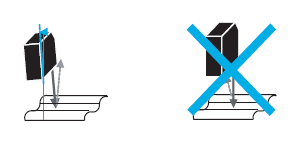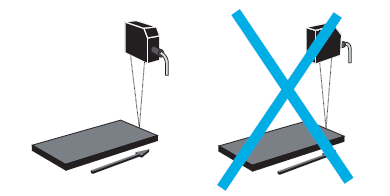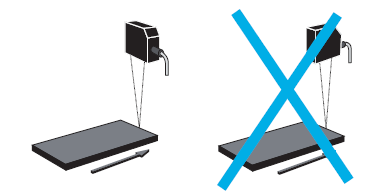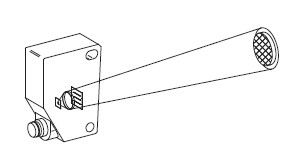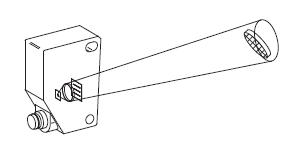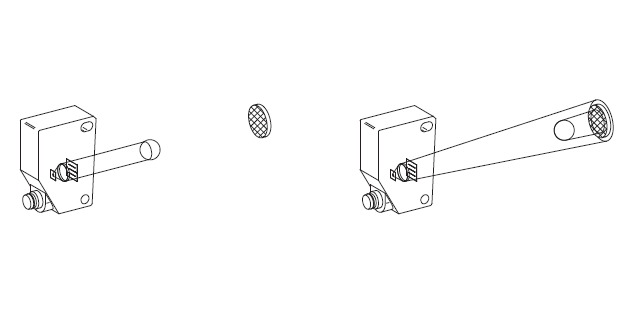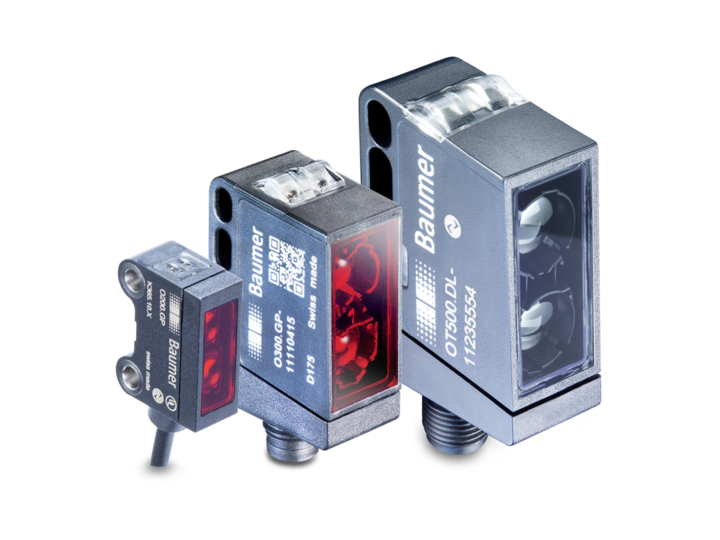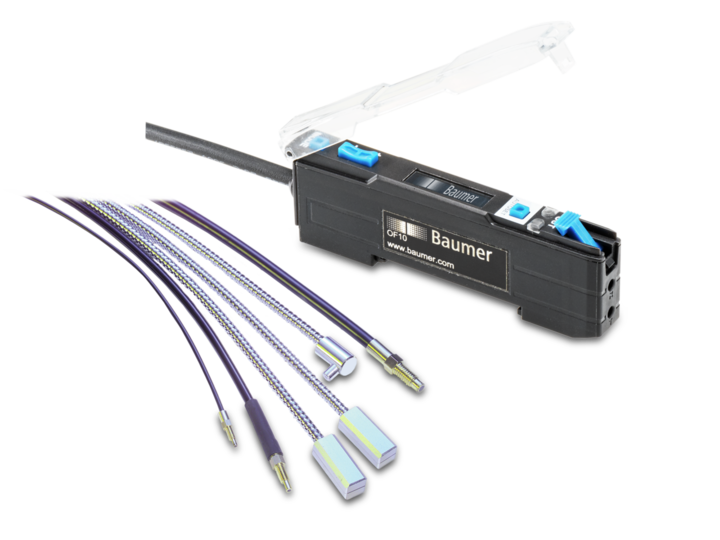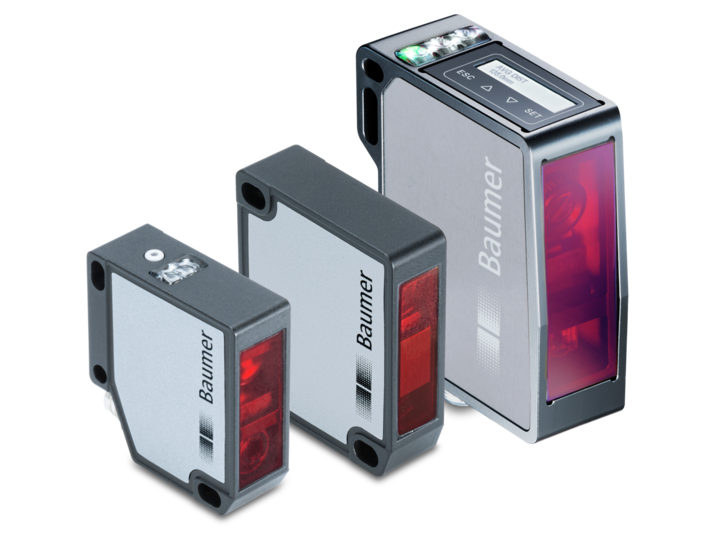Diffuse sensors with background suppression
The diffuse sensor must be aimed at the object. The sensing distance must be set to a distance between the target and the background. The background must be located behind the adjusted sensing distance by at least the distance of the sensing distance reduction of the sensor to black.
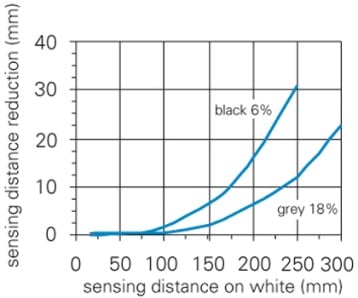
For diffuse sensors with background suppression, the sensing range diagram is specified for the optimum adjustment. This indicates the sensing range reduction as a function of the sensing range to white for different degrees of remission. This means the distance by which the sensing distance to black or gray is reduced in comparison with white. When the adjusted sensing range to white is entered on the X axis of the diagram, the reduction of the sensing distance to black or gray can be read off on the Y axis. The sensing distance reduction also indicates the minimum distance a black or gray object must be separated from a white background.
Light barriers without reflector
The SmartReflect light barrier has to be aligned with a machine part within its sensing range. This machine part is then set using the teach-in.
Diffuse sensors with intensity difference
With diffuse sensors operating by the intensity difference principle, the relative receiving signal is specified. This represents the signal level received from a white object as a function of the distance. Using this diagram, the sensing range can be determined for an object which is not white. The correction factor of the respective material is required for this purpose.
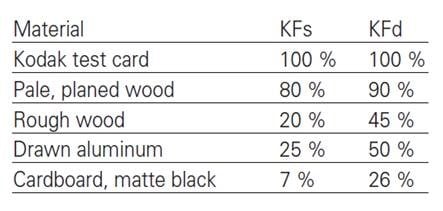
Correction factor
The material and surface properties of the object (representing the reflectivity) influence the switching distance of a diffuse sensor with intensity difference. To determine the corrected switching distance, the following values must therefore be applied to the relative receiving signal (KFs) or in approximation to the distance (KFd).
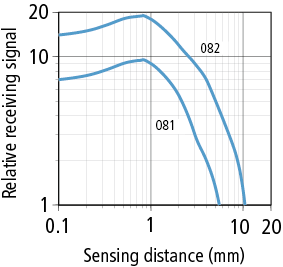
Retro-reflective sensors
Each sensor has a separate excess gain curve. As the operating reliability depends heavily on the ambient conditions, it must be ensured that the sensor operates with the highest possible excess signal gain.
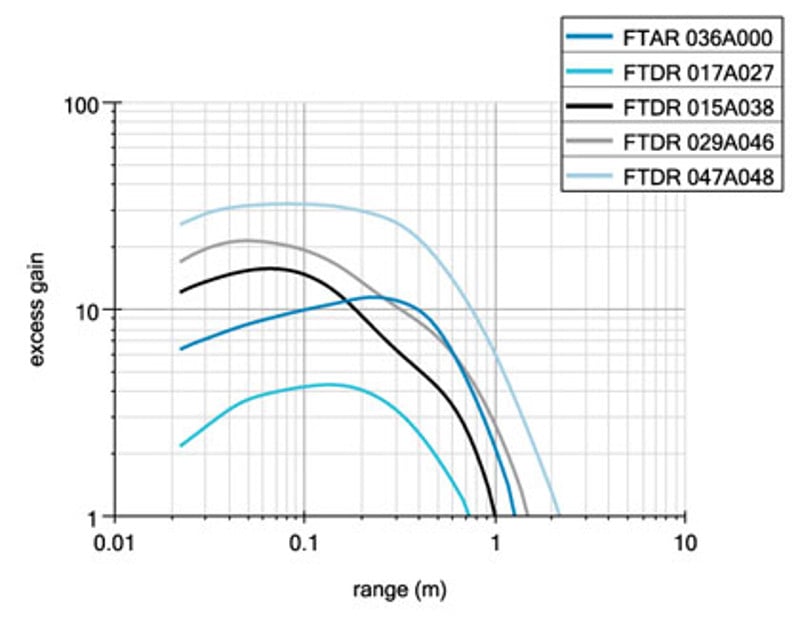
With narrow light beams as used in laser sensors, the size of the light spot on the reflector in relation to the triple structure is crucial factor when it comes to choosing the reflector or the reflective type. A special reflective type or reflector for laser sensors should be used for spot diameters of up to 1,5mm, while the use of reflectors with microstructures is recommended for spot diameters of up to 3 mm. It should also be ensured that the reflective type or reflector is not placed close to the focus.
Through beam sensors
The emitter and receiver must be aimed at each other. The narrower the angle of radiation and reception, the more accurately this must be conducted.
